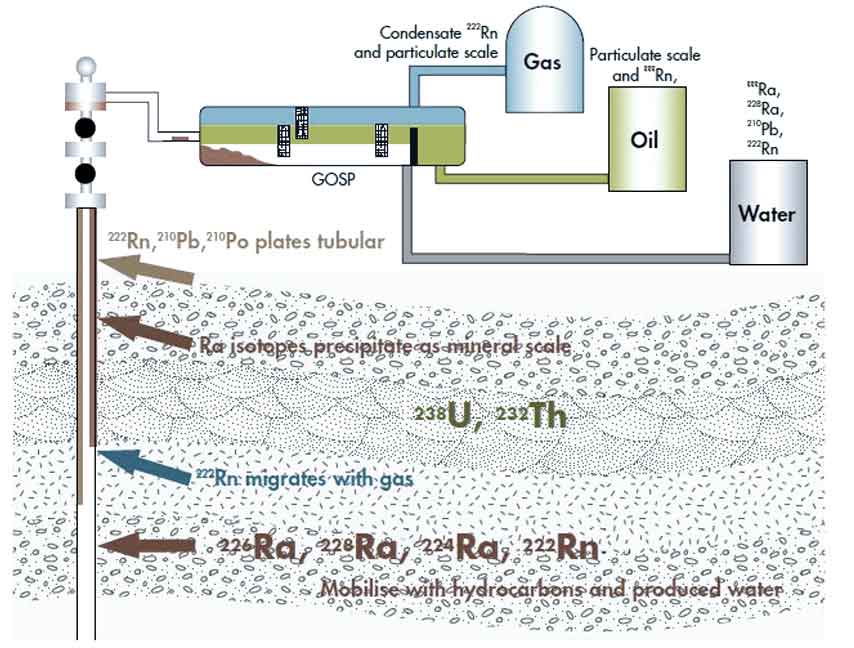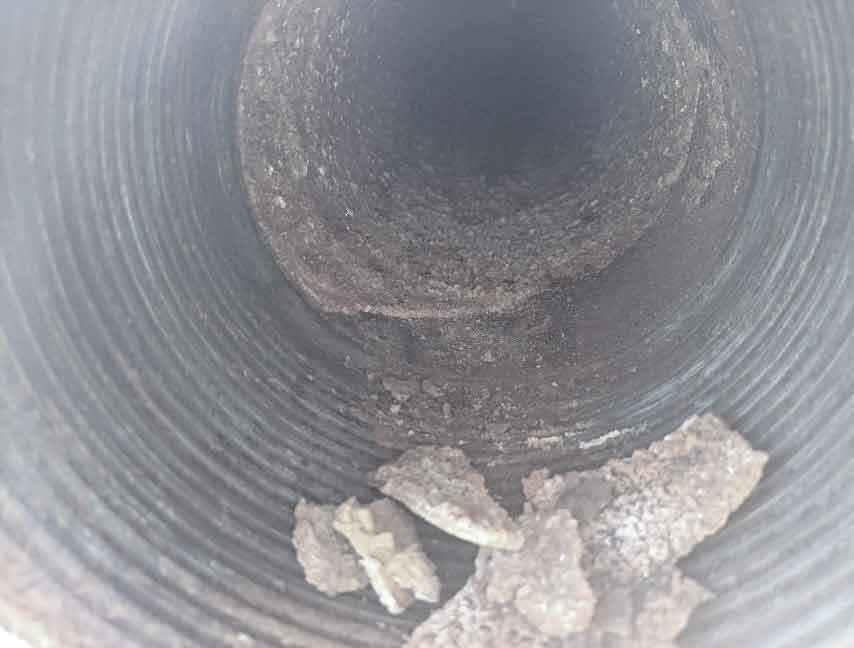NORM
NORM in oil & gas – what is it?

NORM Production
The NORM production mechanisms in oil & gas can vary depending on:
- geology changes from well to well,
- isotope solubility in oil, water, gas
- temperature and pressure changes as formation fluids are brought to surface (onshore and offshore)
- availability of SO4 for formation of scale
- topology (shape) and material of production equipment
The image below shows the main isotopes of concern and their transport and deposition paths within an oil or gas production facility.
Isotope transport in oil & gas production (OGP, 2008)

Radium sulphate scale
Radium scale (commonly formed as barium sulphate with radium replacing some of the barium as a chemical analogue) is the easiest and most commonly detected NORM in oil & gas. Radium and its progeny isotopes emit strong gamma emissions that can be detected with common radiation detecting equipment.
The formed scale is highly insoluble and if the solid particles can be separated from water, the water does not contain high levels of radium. It should be noted that while radium sulphate is not soluble, some of the isotopes that are soluble, metals such as polonium, lead and bismuth, are soluble and may be transported out of the scale and into the wash water.
NORM scale inside production tubular (ALARA HPS, 2019)

Scale can form as attached particles to other solids such as sands which will collect in sand capture systems or plate out as solid formations on the insides of pipes, spools, values and other process wetted equipment. Most NORM is low in quantity and concentration barely registering above background; however, it is possible to encounter significantly higher quantities and concentrations. Scale inside pipes, when produced as a thick solid layer as per image below, can pose a significant health, safety and environment hazard.
Radium sulphate on production sands
Sand capture systems present a unique hazard as the concentration in sands may not be high, but over the course of the field production life, a significant quantity of these sands may be produced. Historically these sands have been stored and designated a ‘decommissioning’ issue, however this approach has proved ineffective given the massive quantity of NORM to be dealt with, and the urgency surrounding the decommissioning timeline.
Gamma dose rate from scale, background is approximately 0.2 µSv/Hr (ALARA HPS, 2019)
